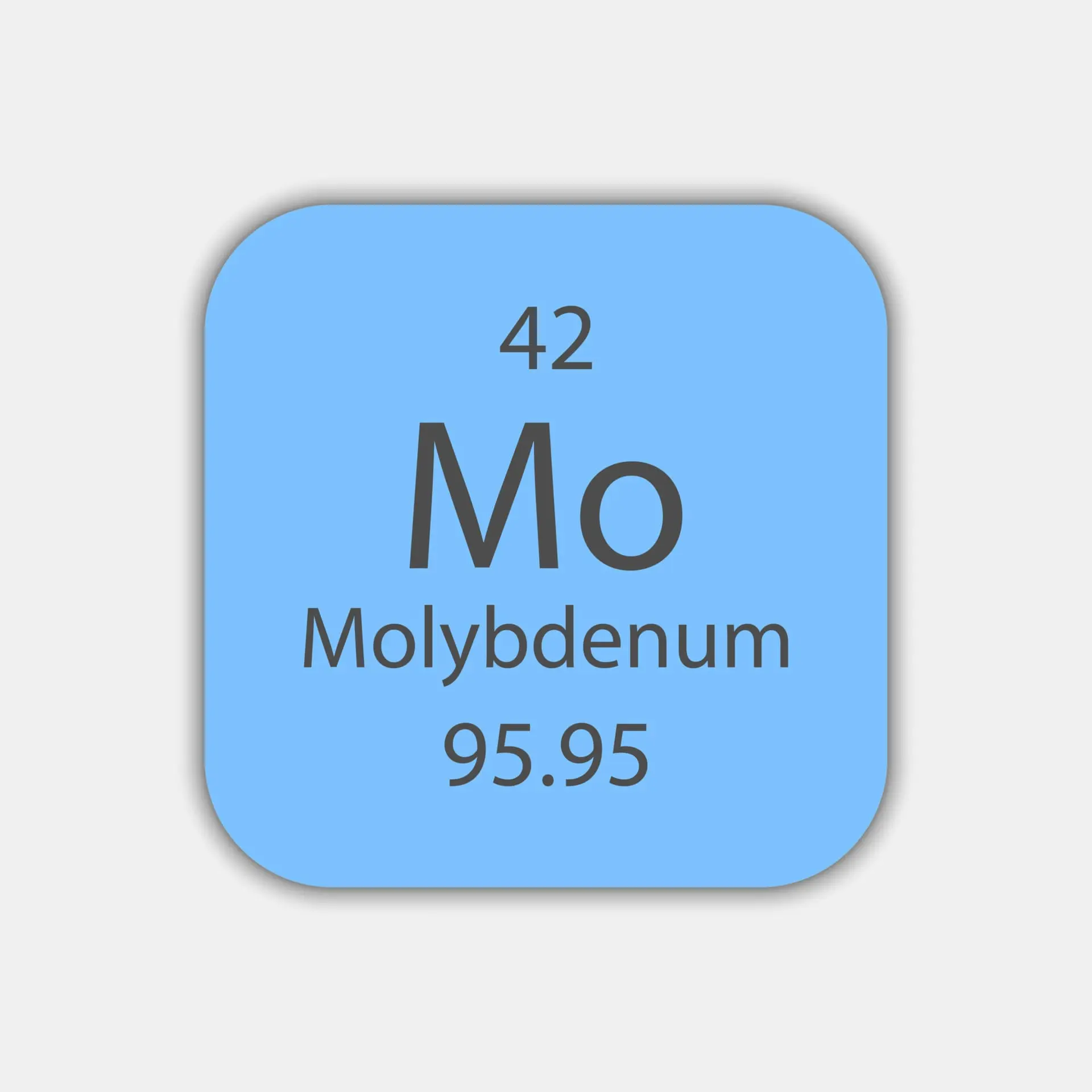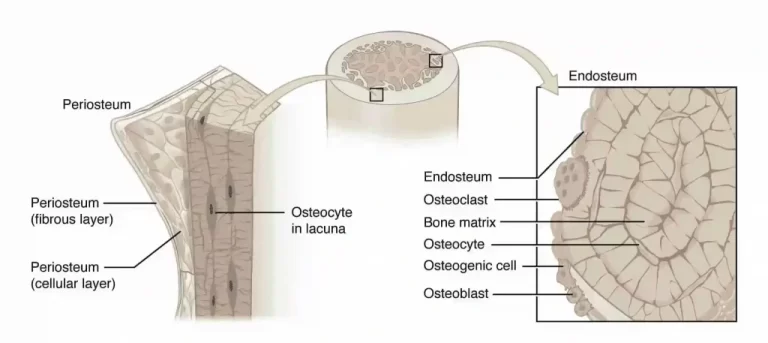Molybdenum
What is Molybdenum?
The chemical element molybdenum has an atomic number of 42 and the symbol Mo, which comes from the Neo-Latin molybdenum.
Due to confusion between its ores and lead ores, the term came from the Ancient Greek word Μόλυβδoς molybdos, which means lead.
Although molybdenum has long been known as a mineral, Carl Wilhelm Scheele made the element’s discovery in 1778—that is when he distinguished it as a separate substance apart from the mineral salts of other metals.
Peter Jacob Hjelm separated the metal for the first time in 1781. On Earth, molybdenum is exclusively found as minerals in a variety of oxidation states; it is not found naturally as a free metal.
The sixth-highest melting point of all elements is found in the free element, a silvery metal with a grey hue.
Because it easily forms hard, stable carbides in alloys, steel alloys, particularly superalloys and high-strength alloys, use the majority of the element’s global production (about 80%).
The solubility of molybdenum compounds in water is generally low; however, when minerals containing molybdenum come into contact with oxygen and water, the resulting molybdate ion, MoO2−4, becomes very soluble.
Molybdenum compounds, which account for 14% of the element’s global production, are employed in high-pressure and high-temperature industrial applications as catalysts and pigments.
When it comes to biological nitrogen fixation, molybdenum-containing enzymes are the most often used bacterial catalysts for cleaving the chemical bond in air molecular nitrogen.
Although only bacterial and cyanobacterial enzymes are involved in nitrogen fixation, at least 50 molybdenum enzymes have been identified in plants, animals, and microbes.
FeMoco, an iron–molybdenum cofactor found in these nitrogenases, is thought to comprise either Mo(III) or Mo(IV).
This is unique. from the completely oxidized Mo(VI) that is complexed with molybdopterin in all other enzymes that include molybdenum and carry out a number of essential tasks.
Because of the multitude of vital processes that these later enzymes catalyze, molybdenum is a necessary component of all higher eukaryotic creatures, including humans. In addition to being found in food naturally, supplements contain molybdenum, an important trace mineral.
Characteristics
Physical Properties
Molybdenum is a silvery-grey metal with a standard atomic weight of 95.95 g/mol and a Mohs hardness of 5.5 when it is pure. With a melting temperature of 2,623 °C (4,753 °F), it is the sixth-highest element found in nature.
The only elements with melting points higher are carbon, tantalum, osmium, rhenium, and t. Among metals used in commerce, it has one of the lowest coefficients of thermal expansion.
Chemical Properties
On the Pauling scale, molybdenum has an electronegativity of 2.16, making it a transition metal. At room temperature, it does not react visibly with oxygen or water, but halogens and hydrogen peroxide attack it.
Molybdenum undergoes weak oxidation at 300 °C (572 °F); bulk oxidation takes place at temperatures higher than 600 °C, producing molybdenum trioxide.
Similar to other heavier transition metals, molybdenum has a minimal propensity to form a cation in aqueous solution; yet, under meticulously regulated circumstances, the Mo3+ cation is identified.
Among the diatomic species that make up gaseous molybdenum is Mo2. In addition to having five regular bonds, that molecule is a singlet with two unpaired electrons in bonding orbitals. A sextuple relationship is the end product.
Isotopes
Molybdenum has 35 known isotopes with atomic masses ranging from 83 to 117, along with four nuclear isomers that are metastable.
There are seven naturally occurring isotopes: 92, 94, 95, 96, 97, 98, and 100 atomic masses. Molybdenum-100 is the only naturally occurring isotope that is unstable. The most common isotope of molybdenum is molybdenum-98, which makes up 24.14% of the total.
With a half-life of approximately 1019 years, molybdenum-100 double beta decays to produce ruthenium-100.
Every unstable molybdenum isotope decays to produce isotopes of ruthenium, technetium, and niobium. With a half-life of four millennia, 93Mo is the most stable of the manmade radioisotopes.
The most often used isotopic molybdenum application is for the fission product molybdenum-99. It is the parent radioisotope of technetium-99m, a nuclear isomer with a brief half-life that is employed in a variety of medical imaging applications.
A patent application for the manufacturing of molybdenum-99 based on molybdenum-98 was submitted by the Delft University of Technology in 2008.
Compounds
Molybdenum is a chemical substance that can be found in oxidation states -4 and +6. Very low oxidation states are usually linked to organomolybdenum compounds.
Mid-level oxidation levels are frequently connected to metal clusters, and higher oxidation states are more pertinent to its terrestrial occurrence and biological significance.
The chemistry of Mo and W is quite similar. For example, the relative abundance of chromium(III) compounds is much higher than that of molybdenum(III).
Molybdenum(VI) oxide (MoO3) has the greatest oxidation state, while molybdenum disulfide (MoS2) is the typical sulfur compound.
The two most significant chemicals from a commercial standpoint are molybdenum trioxide (MoO3) and molybdenum disulfide (MoS2). The principal mineral is black disulfide. To extract the trioxide, it is burned in the air.
2 MoS2 + 7 O2 → 2 MoO3 + 4 SO2
High-temperature volatile trioxide is the starting point for almost all other Mo compounds and alloys. The two most stable oxidation states of molybdenum, indicated by bolding in the table on the left, are +4 and +6.
| Oxidation state | Example |
| −4 | Na4[Mo(CO)4] |
| −1 | Na2[Mo2(CO)10] |
| 0 | Mo(CO)6 |
| +1 | Na[C6H6Mo] |
| +2 | MoCl2 |
| +3 | MoBr3 |
| +4 | MoS2 |
| +5 | MoCl5 |
| +6 | MoF6 |
Strongly alkaline water dissolves molybdenum(VI) oxide, creating molybdates (MoO42−). Compared to chromates, molybdates are weaker oxidants.
At lower pH levels, they typically condense to create structurally complicated oxyanions, such as Mo7O24]6− and [Mo8O26]4−. Polymolybdates have the ability to combine with other ions to generate polyoxometalates.
The heteropolymolybdate P[Mo12O40]3−, which contains dark blue phosphorus, is utilized for spectroscopic phosphorus detection. The diverse molybdenum chlorides exhibit the full spectrum of molybdenum oxidation states.
- MoCl2, molybdenum(II) chloride; also known as the corresponding dianion [Mo6Cl12] and its hexamer [Mo6Cl14]2-.
- MoCl3, a dark red solid containing molybdenum(III) chloride, transforms into the anion trianionic complex [MoCl6]3-.
- MoCl4 is the black solid molybdenum(IV) chloride, which takes on a polymeric form.
- MoCl5, a dark green solid that takes on a dimeric structure, is molybdenum(V) chloride.
- Black in color, molybdenum(VI) chloride MoCl6 is a monomeric solid that breaks down gradually at ambient temperature into MoCl5 and Cl2.
Molybdenum, like chromium and certain other transition metals, can form quadruple bonds, as in [Mo2Cl8]4− and Mo2 (CH3COO)4.
It has been reported on the Lewis acid characteristics of the butyrate and perfluorobutyrate dimers, Mo2(O2CR)4 and Rh2(O2CR) 4, With carbon monoxide acting as a ligand, oxidation states 0 and below are feasible, as demonstrated by molybdenum hexacarbonyl, or Mo(CO)6.
History
Molybdena was the previous name for molybdenite, the main mineral from which molybdenum is currently mined. Molybdena was frequently used interchangeably with graphite.
Molybdenite is similar to graphite in that it can be used as a solid lubricant or to blacken surfaces.
The common lead mineral PbS (now known as galena) was mistakenly identified as molybdena even after it was differentiated from graphite. The term molybdena originates from the Ancient Greek word Μόλυβδoς molybdos, which means lead.
It has been suggested that the Greek term itself is a loanword from the Anatolian Lydian and Luvian languages.
In one Japanese sword from the 14th century (mfd. c. 1330), molybdenum was allegedly purposefully alloyed with steel, but this technique was never used extensively and was eventually forgotten.
Bengt Andersson Qvist tested a molybdenite sample in the West in 1754 and concluded that it was not galena because it did not contain lead. Carl Wilhelm Scheele, a Swedish chemist, said emphatically in 1778 that molybdena was not, in fact, galena or graphite.
Rather, Scheele accurately hypothesized that molybdena was an ore of a completely new element that could be extracted and was termed molybdenum after the mineral it was found in.
In 1781, Peter Jacob Hjelm used linseed oil and charcoal to successfully separate molybdenum. Molybdenum was not used in industry for the following century.
It was comparatively rare, the pure metal was hard to extract, and the metallurgical methods required were still in their infancy.
Early molybdenum steel alloys had a tendency toward brittleness and recrystallization, which hindered efforts to manufacture the alloys on a wide scale. Despite this, the alloys showed significant promise for enhanced hardness.
William D. Coolidge submitted a patent application making molybdenum ductile, which opens up applications for it such as supporting tungsten-filament light bulbs and serving as a heating element for high-temperature furnaces; molybdenum must be physically sealed or kept in an inert gas to prevent oxide development and degradation.
Flotation is still the principal method of isolation; Frank E. Elmore invented a froth flotation process in 1913 to recover molybdenite from ores.
Molybdenum saw a surge in demand during World War I as it was employed in high-speed steels to replace tungsten and in armor plating.
The 75 mm (3 in) manganese steel plate that was used to defend some British tanks turned out to be ineffective. Much lighter 25 mm (1.0 in) molybdenum steel plates were used in place of the manganese steel ones, enabling improved protection, speed, and maneuverability.
Additionally, the Germans utilized molybdenum-doped steel for heavy weaponry, such as the extremely heavy Big Bertha howitzer, as conventional steel melts at the temperatures generated by the one-ton shell’s propellant.
Demand fell sharply following the war until substantial development of peacetime uses was made possible by metallurgical advancements.
Molybdenum was once more considered strategically significant during World War II as a tungsten replacement in steel alloys.
Occurrence and Production
With an average of 1.5 parts per million in the Earth’s crust and 10 parts per billion in its seas, molybdenum ranks as the 25th most plentiful element in the universe and the 58th most abundant element overall.
A molybdenum-containing grain (1 × 0.6 µm) was found in a pyroxene fragment that was recovered from Mare Crisium on the Moon by the Soviet Luna 24 mission.
The relative infrequency of The quantity of molybdenum in some water-insoluble ores, which is frequently found in combination with sulfur similar to copper, counterbalances its presence in the Earth’s crust.
While molybdenum can be found in wulfenite (PbMoO4) and powellite (CaMoO4), molybdenite (MoS2) is the primary commercial source of molybdenum.
In addition to being extracted as a primary mineral, molybdenum is also a byproduct of the mining of tungsten and copper.
In 2011, the global molybdenum output amounted to 250,000 tonnes, with China accounting for 94,000 t, the United States producing 64,000 t, Chile producing 38,000 t, Peru producing 18,000 t, and Mexico producing 12,000 t.
An estimated 10 million tonnes are in reserves overall, with the majority being in China (4.3 Mt), the US (2.7 Mt), and Chile (1.2 Mt).
By continent, 93% of world molybdenum production is about evenly shared between North America, South America (mainly in Chile), and China.
The remaining is produced in Europe and the rest of Asia, primarily in Armenia, Russia, Iran, and Mongolia. The initial step in the processing of molybdenite is to roast the ore outdoors at 700 °C (1,292 °F).
Gaseous sulfur dioxide and molybdenum(VI) oxide are produced by the process:

Ammonium molybdate is typically obtained by extracting the resultant oxide using aqueous ammonia:

At this point, molybdenite’s impurity copper is removed by treating it with hydrogen sulfide. Ammonium molybdate, which is separated as a solid,
is produced when ammonium molybdate transforms. Molybdenum trioxide is produced by heating this solid:

At 1,100 °C (2,010 °F), crude trioxide can be further refined by sublimation.
The oxide is reduced with hydrogen to generate metallic molybdenum:

The aluminothermic reaction with the addition of iron reduces the molybdenum needed to manufacture steel and produces ferromolybdenum instead. Molybdenum makes up 60% of ferromolybdenum in its typical form.
In August 2009, the value of molybdenum per tonne was roughly $30,000. From 1997 to 2003, the price per tonne was always about $10,000, then in June 2005, it peaked at $103,000. Molybdenum will be traded
as a commodity, according to an announcement made by the London Metal Exchange in 2008.
Mining
The first mine specifically for molybdenum was the Knaben mine, which began operations in southern Norway in 1885.
Reopened in 2007, the facility that was closed in 1973 is currently producing 100,000 kilograms (98 long tons; 110 short tons) of molybdenum disulfide annually.
Molybdenum is a byproduct of copper mining in many porphyry copper deposits, such as the Bingham Canyon Mine in Utah and the Chuquicamata Mine in northern Chile.
However, molybdenite is the main product of large mines in Colorado (such as the Henderson mine and the Climax mine) and British Columbia.
Applications
Alloys
The metallurgical industry uses about 86% of the molybdenum produced, with the remaining portion going toward chemical uses.
Steel (35%), stainless steel (25%), chemicals (14%), tool and high-speed steels (9%), cast iron (6%), molybdenum elemental metal (6%), and superalloys (5%), are the estimated global uses.
Because molybdenum can tolerate high temperatures without appreciably expanding or softening, it is used in high-heat situations like industrial motors, electrical contacts, military armor, aircraft parts, and lightbulb filament supports.
The majority of steel alloys with high strengths (such as 41xx steels) have between 0.25% and 8% molybdenum.
More than 43,000 tonnes of molybdenum are employed annually in cast irons, high-temperature superalloys, tool steels, and stainless steels, even in relatively tiny amounts.
Because of its great resistance to corrosion and weldability, molybdenum is also utilized in steel alloys.
Particularly in the so-called superaustenitic stainless steels (alloys AL-6XN, 254SMO, and 1925hMo), molybdenum adds to the corrosion resistance of type-300 stainless steels, more specifically type-316.
The amount of energy needed to dissolve iron atoms from the surface increases as molybdenum raises lattice strain.
[Inconsistent] Additionally, ferritic (such as grade 444) and martensitic (such as grades 1.4122 and 1.4418) stainless steels are treated with molybdenum to improve their resistance to corrosion.
Molybdenum is occasionally used in place of tungsten due to its lower density and more steady pricing.
The ‘M’ series of high-speed steels, which include M2, M4, and M42, serve as an example and can be used in place of the tungsten-containing ‘T’ steel series.
Other metals can also be coated with molybdenum to make them resistant to flames. While molybdenum has a melting point of 2,623 °C (4,753 °F), it oxidizes quickly over 760 °C (1,400 °F), therefore vacuum conditions are a better place for it to be used.
TZM, a molybdenum superalloy with a composition of molybdenum (~99%), titanium (~0.5%), zinc (~0.08%), and trace amounts of carbon, is resistant to corrosion and can withstand temperatures up to 1,300 °C (2,370 °F).
In experiments, it survived corrosion of a normal eutectic salt (FLiBe) and salt vapors used in molten salt reactors for 1100 hours with such little corrosion that it was difficult to assess.
Despite having roughly twice the strength of pure Mo, it is also more ductile and more weldable.
Other iron-free molybdenum-based alloys are limited in their applications. For instance, pure molybdenum and molybdenum-tungsten alloys (70%/30%) are both utilized for pipelines, stirrers, and pump impellers that come into contact with molten zinc due to their resistance to it.
Other Applications as a Pure Element
- Some plants, including cauliflower, are fertilized with molybdenum powder.
- In power plants, elemental molybdenum is utilized in NO, NO2, and NOx analyzers to regulate pollution. The element serves as a catalyst for NO2/NOx to generate NO molecules at 350 °C (662 °F), which are then detectable by infrared light.
- Tungsten is substituted by molybdenum anodes in some low-voltage X-ray sources for specific applications like mammography.
- Technetium-99m is produced using the radioactive isotope molybdenum-99 and is utilized in medical imaging. As molybdate, the isotope is handled and kept.
Compound
- Molybdenum disulfide (MoS2) is employed as an anti-wear agent at high pressure and temperature (HPHT) as well as a solid lubricant. It is a frequent ingredient in HPHT greases and generates robust films on metallic surfaces, where a thin coating of molybdenum prevents contact between the lubricated parts in the case of a catastrophic grease failure.
- MoS2 is also utilized as a catalyst in the hydrodesulfurization (HDS) of petroleum when mixed with trace amounts of cobalt. This catalyst helps remove sulfur and nitrogen from the feedstock, which would otherwise contaminate downstream catalysts when hydrogen is present. One of the most extensive uses of catalysis in industry is HDS.
- Oxides of molybdenum play a significant role as catalysts in the selective oxidation of organic molecules. MoOx-based catalysts are necessary for the synthesis of formaldehyde and acrylonitrile, two common compounds.
- The main application for molybdenum disilicide (MoSi2), an electrically conducting ceramic, is in heating components that run at temperatures higher than 1500 °C in air.
- Between enamels and metals, molybdenum trioxide (MoO3) is employed as an adhesive.
- A bright orange pigment called lead molybdate (wulfenite) is used in ceramics and plastics. It co-precipitates with lead chromate and lead sulfate.
- In the chemical industry, mixed oxides based on molybdenum are useful catalysts. A few instances are the catalysts for the oxidation of carbon monoxide, the ammoxidation of propylene to acrylonitrile, and the conversion of propylene to acrolein and acrylic acid.
- For hydrotreating rapeseed oil, molybdenum carbides, nitride, and phosphides can be employed.
- Biological staining is done with ammonium heptamolybdate.
- Copper indium gallium selenide, or CIGS, solar cells are made of soda lime glass covered with molybdenum.
- A stain used in thin-layer chromatography is phosphomolybdic acid.
Biological Role
Mo-containing Enzymes
A 2008 study proposed that the evolution of eukaryotic life, which comprises all plants and animals, may have been significantly impacted by the lack of molybdenum in the early oceans of Earth.
Molybdenum is an important element for the majority of species. There are at least 50 known molybdenum-containing enzymes, most of which are found in bacteria.
Among these enzymes are xanthine oxidase, sulfite oxidase, and aldehyde oxidase. With one exception, molybdopterin binds molybdenum (Mo) in proteins to provide the molybdenum cofactor.
Nitrogenase is the only known exception, as it employs the FeMoco cofactor Fe7MoS9C. Function-wise, molybdoenzymes regulate nitrogen, sulfur, and carbon by catalyzing the oxidation and occasionally reduction of specific small molecules.
Xanthine oxidase is an enzyme that contains molybdenum and catalyzes the purine catabolism process in humans and certain animals by oxidizing xanthine to uric acid.
The body’s molybdenum levels are closely correlated with xanthine oxidase activity. The tendency is reversible and other processes, like purine catabolism, can be inhibited by exceedingly high molybdenum concentrations.
Additionally, growth, metabolism, and protein synthesis are impacted by molybdenum content.A component of most nitrogenases is mo.
Nitrogenases are the only molybdoenzymes that do not contain molybdopterin. The synthesis of ammonia from atmospheric nitrogen is catalyzed by nitrogenases

The FeMoco active site is exceedingly complexly biosynthesised.
Within the body, molybdate is carried as MoO42−.
Human Metabolism and Deficiency
One crucial dietary trace mineral is molybdenum. There are four known Mo-dependent mammalian enzymes: sulfite oxidase, xanthine oxidoreductase, aldehyde oxidase, and mitochondrial amidoxime reductase.
All of these enzymes have a pterin-based molybdenum cofactor (Moco) in their active site. Severe molybdenum deficiency is associated with impaired sulfite oxidase activity and a higher risk of harmful responses to sulfites in the diet.
About 0.07 mg of molybdenum per kilogram of body weight is found in the human body, with lower quantities found in the vertebrae and greater concentrations found in the liver and kidneys.
Human tooth enamel contains molybdenum as well, which may help keep it from decaying. Molybdenum is one essential dietary trace mineral.
Sulfite oxidase, xanthine oxidoreductase, aldehyde oxidase, and mitochondrial amidoxime reductase are the four known Mo-dependent mammalian enzymes.
In the active site of each of these enzymes is a molybdenum cofactor (Moco) based on pterin. An increased risk of adverse reactions to dietary sulfites and decreased sulfite oxidase activity are linked to severe molybdenum insufficiency.
The human body has 0.07 mg of molybdenum per kilogram of body weight, with the liver and kidneys containing higher concentrations and the vertebrae containing lower amounts.
Molybdenum is also present in human tooth enamel, which may assist in preventing tooth decay. A widespread dietary molybdenum deficit and elevated incidence of esophageal cancer are linked to low soil molybdenum concentrations in a region spanning from northern China to Iran.
In contrast to the United States, where molybdenum is more abundant in the soil, residents of those locations are approximately 16 times more likely to develop esophageal squamous cell carcinoma.
Long-term total parenteral nutrition—complete intravenous feeding—that is not supplemented with molybdenum has also been linked to molybdenum deficiency.
It causes elevated blood levels of urate and sulfite, much like a shortage of molybdenum cofactor. The neurological effects of pure molybdenum insufficiency from this origin are less severe than those of congenital cofactor deficiency since the condition primarily affects adults.
An inability to manufacture molybdenum cofactor, the heterocyclic molecule mentioned above that binds molybdenum at the active site.
All known human enzymes that require molybdenum, is a congenital molybdenum cofactor deficiency condition that affects babies. As a result of the shortage, there is brain damage and elevated sulfite and urate levels.
Excretion
The majority of molybdenum is eliminated from the body by the urine as molybdate. Moreover, as dietary molybdenum intake rises, so does molybdenum excretion in the urine. Molybdenum is expelled from the body in trace amounts through the bile; trace amounts can also be lost through perspiration and hair.
Excess and Copper Antagonism
Copper insufficiency can result from high molybdenum levels interfering with the body’s ability to absorb copper.
Molybdenum raises the quantity of expelled copper in urine and inhibits plasma proteins from binding to copper.
High molybdenum intake causes diarrhea, reduced development, anemia, and achromotrichia (loss of fur pigment) in ruminants. Injectable or dietary copper supplementation can help with these symptoms.
Excess sulfur might exacerbate the effective copper deficit. Ammonium tetrathiomolybdate is a chemical that can be used to intentionally produce copper reduction or deficiency for medicinal purposes.
The copper-chelating component in this compound is the bright red anion tetrathiomolybdate.
Animals with copper toxicosis were the first patients treated with tetrathiomolybdate. It was then used to treat Wilson’s illness, a genetic copper metabolism condition in humans; it works by increasing excretion and conflicting with the bowel’s ability to absorb copper.
Additionally, it has been discovered to have a suppressive effect on angiogenesis, possibly through blocking the copper-ion-dependent membrane translocation process.
Treatments for disorders involving a pathologic expansion of blood vessels, such as cancer and age-related macular degeneration, may be investigated along this potential pathway.
If the pH of the pasturage soil is neutral to alkaline, an excess of molybdenum in it can cause scours, or diarrhea, in some grazing livestock, most notably in cattle; see teartness.
Dietary Recommendations
The National Academy of Medicine (NAM), which was formerly the U.S. Institute of Medicine, revised its molybdenum Recommended Dietary Allowances (RDAs) and Estimated Average Requirements (EARs) in 2000.
Adequate Intake (AI) is an estimate used in place of EARs and RDAs when there is insufficient data to calculate them.
For both male and female newborns, an AI of 2 micrograms (μg) of molybdenum per day was determined for those up to 6 months of age, and 3 μg/day for infants aged seven to 12 months.
The daily recommended allowances (RDAs) for molybdenum for older children and adults are as follows: 17 μg for ages 1-3, 22 μg for ages 4-8, 34 μg for ages 9-13, 43 μg for ages 14-18, and 45 μg for ages 19 and above.
These RDAs are all appropriate for both genders. Females aged 14 to 50 who are pregnant or nursing have a higher daily recommended daily allowance of molybdenum (50 μg).
When there is enough data to support a claim, the NAM establishes tolerable upper intake levels (ULs) for vitamins and minerals.
The upper limit of tolerance for molybdenum is 2000 μg/day. Dietary Reference Intakes (DRIs) are the combined terminology for EARs, RDAs, AIs, and ULs.
Rather than using RDA and Average, the European Food Safety Authority (EFSA) utilizes Population Reference Intake (PRI) to refer to the entire set of data as Dietary Reference Values. Requirement (EAR) in place of EAR.
AI and UL are defined similarly to those in the US. The AI is set at 65 μg/day for males and women who are 15 years of age or older.
Women who are nursing or pregnant have the same AI. The AIs rise with age in children 1-4 years old, from 15 to 45 μg/day.
While the European Food Safety Authority addressed the same safety question and set its UL at 600 μg/day, which is substantially lower than the U.S. value, the adult AIs are greater than the U.S. RDAs.
Labeling
To comply with the U.S. according to laws governing the labeling of foods and dietary supplements, the amount in a serving is expressed as a percentage of the Daily Value (%DV). As of May 27, 2016, the 100% of the Daily Value for molybdenum labeling was changed to 45 μg. A table on that website lists the old and current adult daily values.
Food Sources
The daily average intake ranges from 120 to 240 μg, above the recommended daily intake levels. The molybdenum content in beef, lamb, and pork liver is about 1.5 parts per million. Green beans, eggs, sunflower seeds, wheat flour, lentils, cucumbers, and cereal grains are additional important food sources.
Precautions
When inhaled, molybdenum dust and fumes from metalworking or mining can be hazardous, particularly if they become lodged in the sinuses and then swallowed.
Prolonged low exposure levels might irritate the skin and eyes. It is best to avoid ingesting or inhaling molybdenum and its oxides directly. According to OSHA rules, a maximum of 5 mg/m3 of molybdenum can be exposed during an 8-hour workday.
Weariness, headaches, and joint problems are among the symptoms that might arise from prolonged exposure to 60 to 600 mg/m3. Molybdenum poses an urgent risk to life and health at 5000 mg/m3.
FAQ
What is molybdenum used for?
Alloys are the main application for molybdenum. It is added to steel alloys to improve their electrical conductivity, strength, hardness, and resistance to wear and corrosion. Engine components are made of these “moly steel” alloys. Drills and saw blades, as well as heating components, employ different metals.
What does molybdenum do for the body?
You require molybdenum as a mineral to be healthy. Molybdenum is used by your body to metabolize proteins and genetic material such as DNA. Moreover, narcotics and other harmful compounds that enter the body are broken down by molybdenum.
What are the sources of molybdenum?
Nuts, cow liver, and whole grains are among the other foods high in molybdenum. Legumes, cereal grains, green vegetables, beef liver, and milk are the main dietary sources of molybdenum in the United States. For children and teenagers, the main sources of molybdenum are milk and cheese products.
What color is molybdenum?
The chemical element molybdenum is represented by the letter Mo. There are two forms of pure molybdenum: a silvery-white bulk and a dark gray or black powder with a metallic sheen.
What vitamin is molybdenum?
One crucial trace mineral is molybdenum. Foods including milk, cheese, grains from cereals, legumes, nuts, green vegetables, and organ meats contain it. Most frequently, molybdenum is used to treat molybdenum deficiency.
What is the deficiency of molybdenum?
Encephalopathy, or progressive brain dysfunction, is the hallmark of molybdenum cofactor insufficiency, an uncommon illness. Initially seeming normal at birth, babies with this syndrome start having feeding difficulties and experiencing intractable seizures within a week of being diagnosed.
What is natural molybdenum?
Seven stable isotopes make up natural molybdenum: molybdenum-92 (15.84 percent), molybdenum-94 (9.04 percent), molybdenum-95 (15.72 percent), molybdenum-96 (16.53 percent), molybdenum-97 (9.46 percent), molybdenum-98 (23.78 percent), and molybdenum-100 (9.13 percent) among others.







